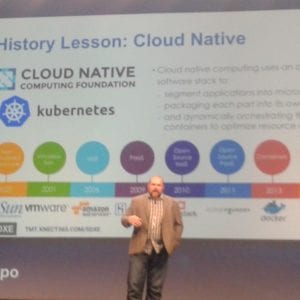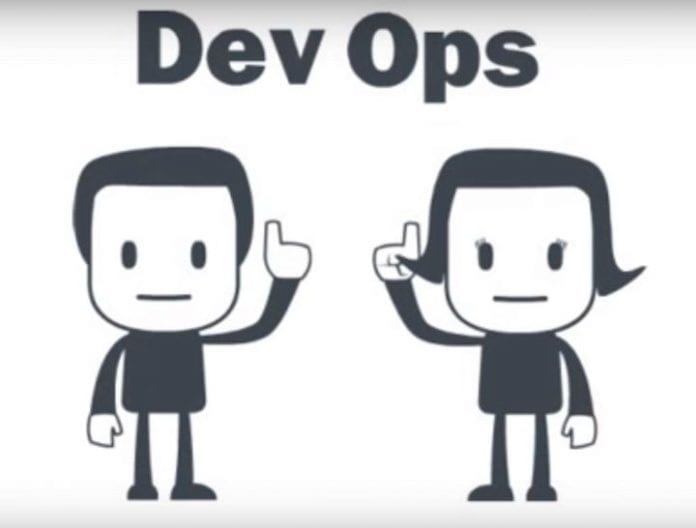The connection between cloud native infrastructure and DevOps
Austin, Texas — The shift from classic non-virtualized hardware to cloud native space has played a major role in shaping DevOps driven environments, according to Robert Starmer, a founder at Kumulus Technologies. Companies need a platform for deploying and managing cloud native applications capable of combining the concept of DevOps.
Starmer shared his thoughts on the impact native cloud has had on the idea of DevOps during a keynote presentation at SDxE Software-Defined Enterprise Conference and Expo. DevOps is a term used to refer to the integration of software developers and operations teams. Originally coined by Patrick Debois in 2009, the main goal behind DevOps was to boost time to market applications with lower cost and better quality by combining the two departments. However, according to Starmer, the seeds of DevOps were sewn in 2001 with the rise of virtualization.
“Companies like Sun Microsystems actually started to containerize software within their environments, but also SaaS space, the space that was really growing at the time. We saw virtualization starting to happen also in a software way and eventually migrate into the hardware,” Starmer said. “That migration enabled Infrastructure-as-a-Service, providing the first pro-cloud functionality of things like Amazon Web Services, which started to express their compute resources as available virtual resources that anyone could consume on an on-demand fashion.”
This on-demand fashion served as the cornerstone for how the notion of DevOps started to change. According to Starmer, the virtualization of infrastructure gave rise to a disconnect between the developer community and the hardware community, effectively creating a DevOps environment in return. “The developers had the ability to automate their infrastructure, but didn’t really want to manage that infrastructure; they didn’t want to have to deal with the complexity of server operating systems, and that led to this concept of Platform-as-a-Service,” he said.
Another big shift taking place at the time that had an impact on cloud native infrastructure was open source projects. The open source community started to implement cloud-sourced tools like Amazon and Cloud Foundry under an open source paradigm. “That open source shift really was the beginning of what we now see as cloud native.”
Although the infrastructure was now software managed, its complexity made it difficult for developers to get a handle on. Consequently, another shift toward a packaging model known as containerization took place, which had a way of simplifying what an application developer actually had to work with. As a result, container-driven infrastructure used in native cloud platforms is paving the way for how developers now write code.
“This containerization move really shifted again the concept of DevOps. Now our operations that we are looking at are container operations instead of application operating systems and entire infrastructure operations. And that is sort of what leads us today with cloud native,” Starmer said.

